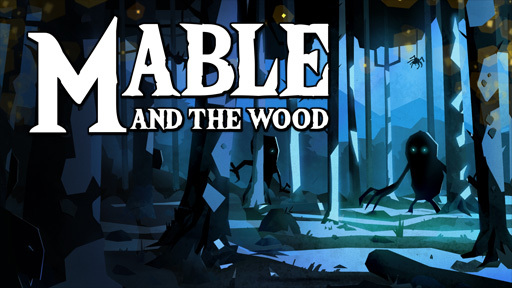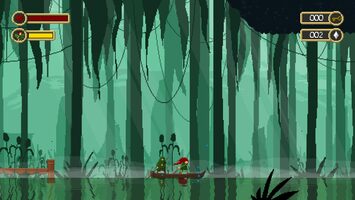Mable & The Wood Mable & The Wood is a Metroidvania where you can take the form of the bosses that you kill, changing how you're able to explore the interconnected world. It's also a Metroidvania. Mable is a very popular first name for females (#408 out of 4276, Top 10%) and also a very popular last name for both adults and children (#40397 out of 150436, Top 27%). DEMOGRAPHICS) Mable reached its highest rank of #124 in the U.S. In the 1900s, but is not found in the list at the moment. (TOP 2000 NAMES, 2018).
Social and domestic
Social and domestic
Ideal for people new to the industry, this might include companionship, help around the house, support getting out and about and lots of other things! You don’t need specific qualifications.
Personal Care
Personal Care
Includes assistance with personal hygiene, manual handling and mobility and assistance with medication.
To find out more about offering Personal care to our community click here
Nursing Services
Nursing Services
To find out more about offering Nursing to our community click here
Speech Therapy
Speech Therapy
To find out more about offering Speech Therapy to our community click here
Psychology
Psychology
To find out more about offering your services as a registered psychologist to our community
click here
Physiotherapy
Physiotherapy
To find out more about offering Physiotherapy to our community click here This war of mine season pass.
Occupational Therapy
Occupational Therapy
To find out more about offering Occupational Therapy to our community click here
Be your own boss
As an independent support worker, you’re running your own business. Choose the clients you work with, the services you want to provide and the hours you work
Insurance coverage
We’ve got you covered. All support workers are protected by a suite of insurances (public liability, personal accident, and professional indemnity)
Earn more per hour
Traditional providers can often charge up to 40-50% of the hourly service fee. On Mable, independent workers receive the hourly agreed rate, less 10%
How it works
We’ve designed Mable to be an easy-to-use online platform. Just a simple 3-step process, and you’re in control all the way.
Complete your profile

Create a profile that will help clients get to know you better. You’ll include your skills and experience, rates, availability and interests. You’ll need to provide references and we’ll need to do some checks.
Get approved & start working
Once you’re approved, people looking for support will contact you directly or you can search for jobs in your area. Together, you can agree the rates, hours and services that work for you both.
Build your business online
Keep track of your clients, timesheets and payments all through the Mable platform, available online and through the mobile app.
Mable & The Wood Review
You agree the rates directly with the clients you choose.
One your rate is agreed, your client pays the agreed rate plus 5%. You receive the agreed rate less 10%
The illustrative example based on an agreed rate of $40. Rates typically range from $30.00 – $48.00 on the platform across independent workers with different experiences, qualifications and services.
Not all services require formal qualifications – just a good heart and empathy for others. Feel free to go ahead and get started, we’re here to help you along the way!
Minimum on boarding requirements:
- Australian Business Number (ABN)
- Police check through our verification partner (through your Mable account link)
- Working with Children Check (if working with children)
- Mandatory COVID-19 training
- Two references
- A great photo
Client records all in one place
All your client agreements, timesheets, invoices, messages and records all in one place
Invoicing & collection support
We work on your behalf to ensure receiving payment is as seamless as possible. This includes automated invoicing and collection support.
Helping you along the way
Access to our online Learning Hub with over 100+ courses and ongoing phone and online support with our Australia-based Mable team.
Join our network
of local support workers
Engage with Mable's aged & disability community and build a network of local clients in your area. The choice is yours.
Common questions about becoming an independent support worker
How do I obtain an ABN?You can obtain an ABN by applying for it through the ATO via the Australian Business Register website. There is no fee for applying but if you use a tax agent to complete an application for you they may charge for their services.
How do I get a Police Check?As part of our safeguards for our Mable community, our policy requires all independent support workers to apply and pay for a new Police Check through our partner Checked Australia, even if you have an existing check.
This is because Checked Australia ensures all police checks are verified, validated and a true representation of police history.
You can obtain a police check at a discounted price via your onboarding process. Once it is completed you will receive a copy and can use it for other purposes.
What qualifications do I need?If you are only offering social support and domestic assistance, you do not need any formal qualifications, but you will need:
- Complete profile
- Valid police check
- Two professional or personal references
If you would like to offer personal care you will need to have the following:
- Complete profile
- Valid police check
- Two professional references
Personal care qualification from at least one of the following:
- Certificate 3 or 4 in Individual Support
- Certificate 3 or 4 in Aged Care
- Certificate 3 or 4 in Disabilities
- Certificate 3 or 4 in Home and Community Care
- Assistant in Nursing (AIN) Certificate
Working towards nursing degree (needs to have already completed first year) - Degree in nursing
- Degree in Allied Health
- Other relevant qualification
- 2 or more years of experience
If you would like to offer nursing services you will need to have the following:

- Be a registered nurse
- Have more than 1 year of relevant nursing experience
- Have been registered as a nurse with AHPRA (Australian Health Practitioners Regulation Agency)
- Your AHPRA registration has been active for at least 12 months
- Nurses should not provide any services within these categories that their AHPRA registration does not allow them to provide.
If you need any assistance completing your profile, please don’t hesitate to contact our registration team on 1300 73 65 73
Who can I use as a reference?All care workers are required to submit two references as part of the application process.
If you are offering personal care or nursing services, you will need two professional references. Professional references include supervisors, senior colleagues, trainers, and clients.
If you are only offering social support and domestic assistance, you will need two personal references. Personal references include colleagues at the same level or other qualified people who know you.
Ironhide's ultimate strategy bundle download mac. Family members or partners / spouses cannot be accepted as references under any circumstances.
Motorsport manager - endurance series download free. If you are unsure who you can use as a reference, please call us on 1300 73 65 73.
Am I covered by insurance?You will automatically be covered by insurance that Mable arranges on your behalf for all care you provide to clients that is confirmed as delivered and paid for via the Mable platform when:
- you sign up to Mable as an independent worker
- your profile is approved via our registration process
- you complete an online insurance declaration.
The insurance policy is provided by Zurich Australian Insurance and covers professional indemnity, public liability and personal accident insurance (including journey insurance) for all Support Workers. More information on the insurance policies provided by Zurich Australia.
This provides you and your clients with important peace of mind.
It is important that you make sure all hours of services provided to your clients are accurately recorded and confirmed as delivered and paid for via the Mable platform as you will not be covered by insurance if services are not recorded as delivered and paid for through Mable.
When will I receive payment from a client?This depends on how quickly you complete your time sheet, and the method of payment that the client is using. Support workers are only paid once the client has paid in full for the session.
If the client is paying by credit card, then payment to the support worker is usually made within 5 days of the time sheet being approved by the client. If the client is paying by direct debit, it can take up to 10 days for payment to be collected from the client and paid to the care worker once the time sheet is approved. This is due to additional processing time by the bank.
Some organisations pay by invoice which is generated by the Mable platform on your behalf. All invoices are issued with 7-day payment terms, however some organisations can take up to 30 days to pay. You may want to consider this before accepting clients that pay by invoice.
To see which payments have been collected from the client and paid to you, see your timesheet.
How much do I get paid?As an independent worker, you can set your own hourly rates and agree to these with each client. The hourly rate you can charge may be determined by several factors, such as:
- Your experience and qualifications
- The quality of care you provide as reflected in your profile feedback
- The type of services you offer
- The level of demand in the areas you work for your services and skills
- The time of day, as demand may vary
- The length of visit and travel time involved
Mable collects payment from clients on behalf of support workers for care delivered each week. We then deduct the 10% care worker service fee, and pay the money weekly to each care worker’s nominated bank account.
Our editors will review what you’ve submitted and determine whether to revise the article.
Join Britannica's Publishing Partner Program and our community of experts to gain a global audience for your work!Mable And The Wood Steam
Marble, granular limestone or dolomite (i.e., rock composed of calcium-magnesium carbonate) that has been recrystallized under the influence of heat, pressure, and aqueous solutions. Commercially, it includes all decorative calcium-rich rocks that can be polished, as well as certain serpentines (verd antiques).
Petrographically marbles are massive rather than thin-layered and consist of a mosaic of calcite grains that rarely show any traces of crystalline form under the microscope. They are traversed by minute cracks that accord with the rhombohedral cleavage (planes of fracture that intersect to yield rhombic forms) of calcite. In the more severely deformed rocks, the grains show stripes and may be elongated in a particular direction or even crushed.
Marbles often occur interbedded with such metamorphic rocks as mica schists, phyllites, gneisses, and granulites and are most common in the older layers of Earth’s crust that have been deeply buried in regions of extreme folding and igneous intrusion. The change from limestones rich in fossils into true marbles in such metamorphic regions is a common phenomenon; occasionally, as at Carrara, Italy, and at Bergen, Norway, recrystallization of the rock has not completely obliterated the organic structures.
Most of the white and gray marbles of Alabama, Georgia, and western New England, and that from Yule, Colorado, are recrystallized rocks, as are a number of Greek and Italian statuary marbles famous from antiquity, which are still quarried. These include the Parian marble, the Pentelic marble of Attica in which Phidias, Praxiteles, and other Greek sculptors executed their principal works, and the snow-white Carrara marble used by Michelangelo and Antonio Canova and favoured by modern sculptors. The exterior of the National Gallery of Art in Washington, D.C., is of Tennessee marble, and the Lincoln Memorial contains marbles from Yule, Colorado, Alabama (roof transparencies), and Georgia (Lincoln statue).
Even the purest of the metamorphic marbles, such as that from Carrara, contain some accessory minerals, which, in many cases, form a considerable proportion of the mass. The commonest are quartz in small rounded grains, scales of colourless or pale-yellow mica (muscovite and phlogopite), dark shining flakes of graphite, iron oxides, and small crystals of pyrite.
Many marbles contain other minerals that are usually silicates of lime or magnesia. Diopside is very frequent and may be white or pale green; white bladed tremolite and pale-green actinolite also occur; the feldspar encountered may be a potassium variety but is more commonly a plagioclase (sodium-rich to calcium-rich) such as albite, labradorite, or anorthite. Scapolite, various kinds of garnet, vesuvianite, spinel, forsterite, periclase, brucite, talc, zoisite, wollastonite, chlorite, tourmaline, epidote, chondrodite, biotite, titanite, and apatite are all possible accessory minerals. Pyrrhotite, sphalerite, and chalcopyrite also may be present in small amounts.
These minerals represent impurities in the original limestone, which reacted during metamorphism to form new compounds. The alumina represents an admixture of clay; the silicates derive their silica from quartz and from clay; the iron came from limonite, hematite, or pyrite in the original sedimentary rock. In some cases the original bedding of the calcareous sediments can be detected by mineral banding in the marble. The silicate minerals, if present in any considerable amount, may colour the marble; e.g., green in the case of green pyroxenes and amphiboles; brown in that of garnet and vesuvianite; and yellow in that of epidote, chondrodite, and titanite. Black and gray colours result from the presence of fine scales of graphite.
Bands of calc-silicate rock may alternate with bands of marble or form nodules and patches, sometimes producing interesting decorative effects, but these rocks are particularly difficult to finish because of the great difference in hardness between the silicates and carbonate minerals.

Later physical deformation and chemical decomposition of the metamorphic marbles often produces attractive coloured and variegated varieties. Decomposition yields hematite, brown limonite, pale-green talc, and, in particular, the green or yellow serpentine derived from forsterite and diopside, which is characteristic of the ophicalcites or verd antiques. Earth movements may shatter the rocks, producing fissures that are afterward filled with veins of calcite; in this way the beautiful brecciated, or veined, marbles are produced. Sometimes the broken fragments are rolled and rounded by the flow of marble under pressure.
The so-called onyx marbles consist of concentric zones of calcite or aragonite deposited from cold-water solutions in caves and crevices and around the exits of springs. They are, in the strict sense, neither marble nor onyx, for true onyx is a banded chalcedony composed largely of silicon dioxide. Onyx marble was the “alabaster” of the ancients, but alabaster is now defined as gypsum, a calcium sulfate rock. These marbles are usually brown or yellow because of the presence of iron oxide. Well-known examples include the giallo antico (“antique yellow marble”) of the Italian antiquaries, the reddish-mottled Siena marble from Tuscany, the large Mexican deposits at Tecali near Mexico City and at El Marmol, California, and the Algerian onyx marble used in the buildings of Carthage and Rome and rediscovered near Oued-Abdallah in 1849.
Mable And The Wood Walkthrough
Unmetamorphosed limestones showing interesting colour contrasts or fossil remains are used extensively for architectural purposes. The Paleozoic rocks (from 251 million to 542 million years in age) of Great Britain, for example, include “madrepore marbles” rich in fossil corals and “encrinital marble” containing crinoid stem and arm plates with characteristic circular cross sections. The shelly limestones of the Purbeck Beds, England, and the Sussex marble, both of Mesozoic Era (from 251 million to 65.5 million years ago), consist of masses of shells of freshwater snails embedded in blue, gray, or greenish limestone. They were a favourite material of medieval architects and may be seen in Westminster Abbey and a number of English cathedrals. Black limestones containing bituminous matter, which commonly emit a fetid odour when struck, are widely used; the well-known petit granit of Belgium is a black marble containing crinoid stem plates, derived from fossil echinoderms (invertebrate marine animals).
Mable The Wood Gog
Mable The Wood Review
- related topics
